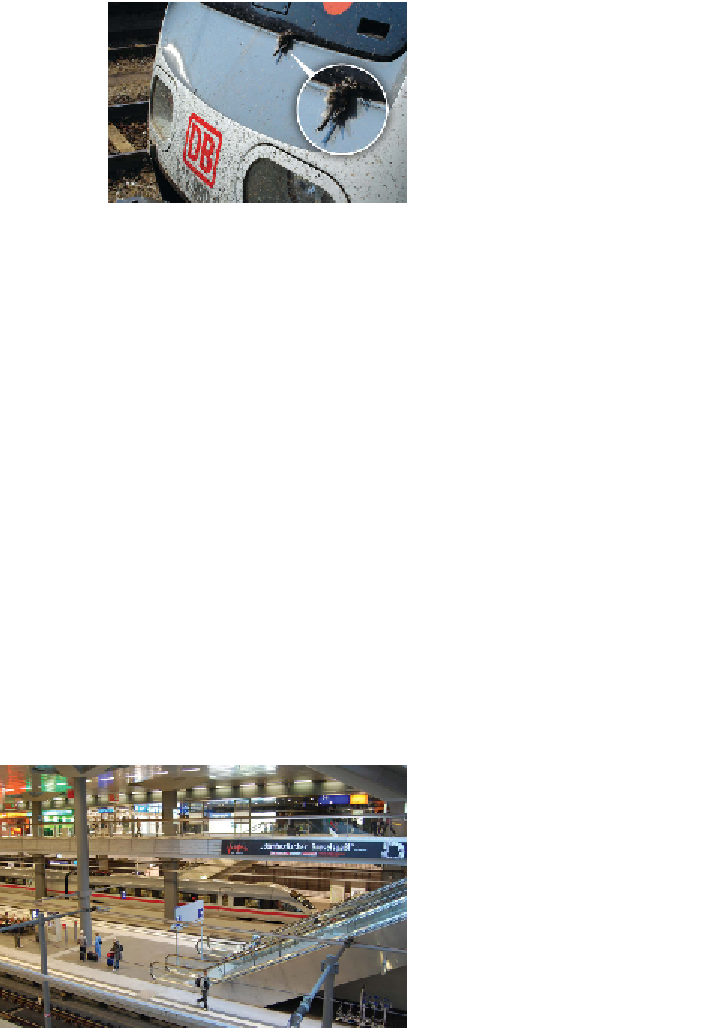Travel Reference
In-Depth Information
Trains are faster than ever. On
a recent visit to Munich, I was pho-
tographing trains pulling in to the
station—with birds squished onto
the windshields. Looking at those
poor birds, I thought, “You'd wait all
your life to see a bird squished onto
a windshield of a train back in my
hometown.”
A bullet train now zips under
the English Channel, taking people from Paris to London in two and a half
hours. Denmark and Sweden built a mammoth bridge connecting Copenha-
gen and Malmö, creating Scandinavia's largest metropolitan area. And cities
throughout Europe seem to be forever dug up because they are constantly
improving and expanding their underground transit systems.
Non-EU nations are investing, too. Norway, with fewer than i ve million
people, is drilling some of the longest tunnels in the world to lace together
isolated communities in the j ords. Istanbul has scraped together the money
to build a massive train tunnel under the Bosphorus to connect Asia and
Europe and grease its economic engine. And there's an ef ort underway to dig
a tunnel connecting Spain and Morocco under the Strait of Gibraltar.
Savvy nations understand that infrastructure is the foundation for pros-
perity (and power). Hitler knew he couldn't take on Europe without a good
highway system, so he built the autobahn. h e United States undertook a
massive investment in our interstate highway system in the 1950s, which
helped our country truck itself into greater economic power. And in our
generation, Europe is investing money it could be spending on its military
on its infrastructure instead.
Exploring a continent with a level
of al uence similar to the US's gives
us a chance to see i rsthand the result
of allocating limited resources with
dif erent priorities. People everywhere
Europe's new high-speed train network is
good for commerce...but bad for birds.
Berlin's new train station is the biggest in
Europe, with 1,800 trains a day arriving
on 14 major train lines, coming in at right
angles on two dif erent levels.
















































































